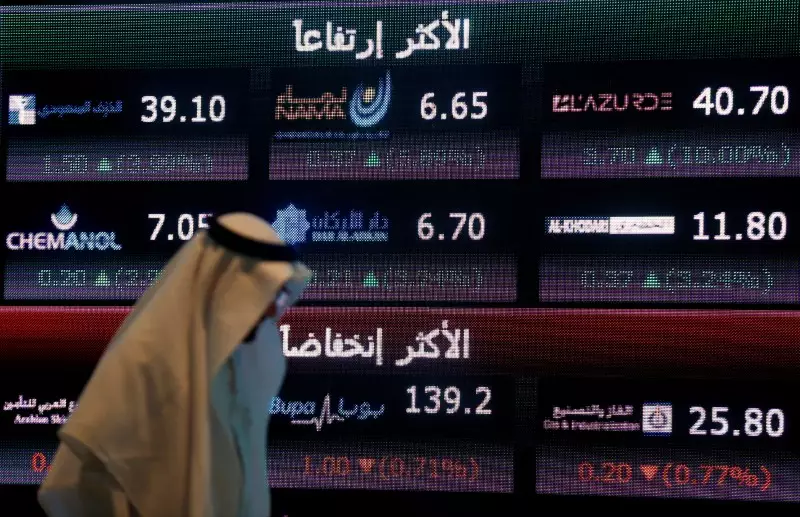On a notable trading day, Saudi Arabia’s stock market exhibited positive momentum, primarily driven by the notable performance of key sectors such as Real Estate Development, Insurance, and Energy & Utilities. As trading concluded on Sunday, the Tadawul All Share index revealed an increase of 0.28%, highlighting underlying strength in the market despite global economic challenges.
Several companies stood out during this session, showcasing impressive gains that contributed to the overall performance of the market. BURUJ Cooperative Insurance Company emerged as a standout performer, surging by an impressive 9.96%, which translated to an increase of 1.82 points, closing at 20.10. Such robust growth reflects not only investor confidence in the insurance sector but may also suggest a positive trend towards consumer protection products in the region.
Additionally, Arriyadh Development Company saw its stock price climb by 9.34%, marking a pivotal moment as it reached a five-year peak at 34.55. This performance could signal a resurgence in real estate development, a vital area within Saudi Arabia’s economic framework, potentially linked to ongoing infrastructure projects and urban development plans by the government.
Wataniya Insurance Company also made notable strides, adding 8.00% to close at 23.22. This upward trajectory may be representative of improved market conditions within the insurance landscape.
Conversely, not all stocks performed well. Al Baha Investment and Development Company faced significant pressure, with its shares plunging by 4.00% to settle at 0.48. This decline raises questions about the company’s operational effectiveness and its ability to navigate current market conditions. Similarly, the Saudi Cable Company and Almarai Company experienced declines of 2.94% and 2.46%, respectively, suggesting sector-specific challenges that investors will need to monitor.
Despite these setbacks, the broader market sentiment remained optimistic, indicated by the fact that advancing stocks outnumbered decliners, with 182 gaining and 121 falling, alongside a standstill for 28 stocks. This uneven but encouraging spread reinforces the notion that there is a resilient backbone within the market.
Commodity Market Influences
The dynamics in commodities trading have a direct impact on market performances. In particular, crude oil prices showed an upward trend, with February futures climbing by 0.92% to $70.26 a barrel, potentially providing a buffer for the local economy that is heavily reliant on oil revenues. Meanwhile, Brent oil prices remained stable at $73.79 per barrel. Such stability in oil prices can have a significant effect on investor sentiment and economic confidence.
In currency markets, the EUR/SAR exchange rate appreciated slightly, indicative of regional economic activity, while the USD/SAR remained stable, reflecting confidence in the Saudi economy amidst fluctuations in global markets.
The Saudi stock market displayed a favorable performance bolstered by strong sectoral gains, despite facing some challenges in individual stocks. The fluctuations in commodity prices and currency stability further influence market dynamics. Moving forward, investors will likely remain vigilant, closely monitoring upcoming economic indicators and sector performances to navigate the evolving landscape effectively. With government initiatives and global economic conditions playing critical roles, the outlook for Saudi Arabia’s market remains mixed yet cautiously optimistic.

